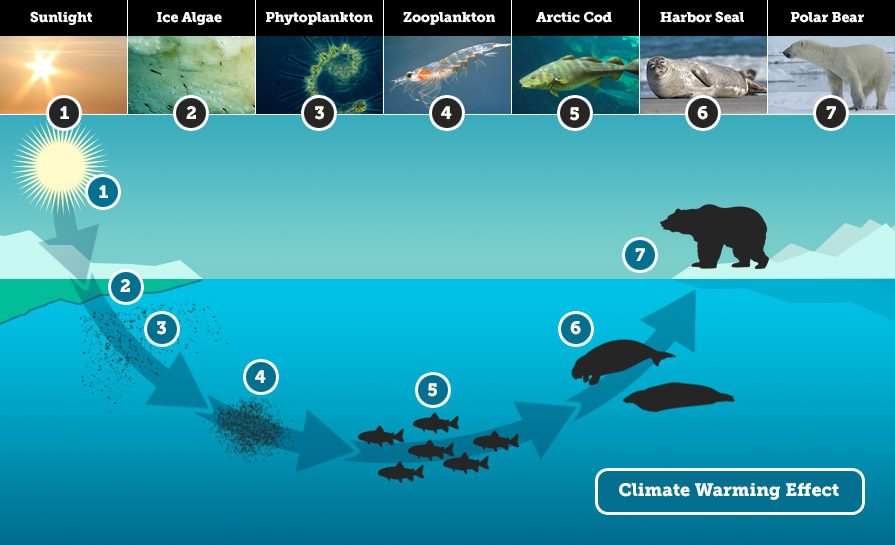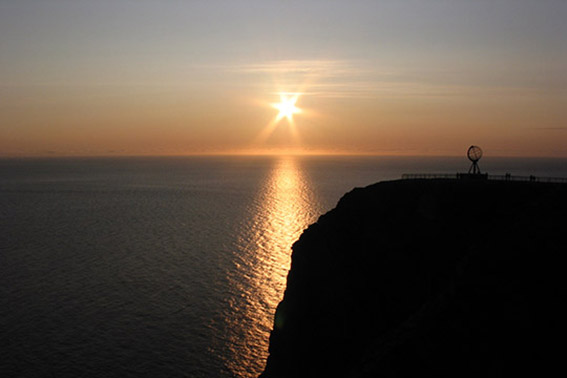
Source Midnight Sun | Wikipedia
The sunlight provides the energy for photosynthesis, which allows the ice algae and phytoplankton to produce. In the fall and winter months, the amount of sunlight in the Arctic decreases, so the rate at which these organisms are able to produce declines. This makes food harder to find, so animals with either hibernate or migrate. Towards the end of winter, the amount of sunlight increases and the algae and phytoplankton are able to start growing.
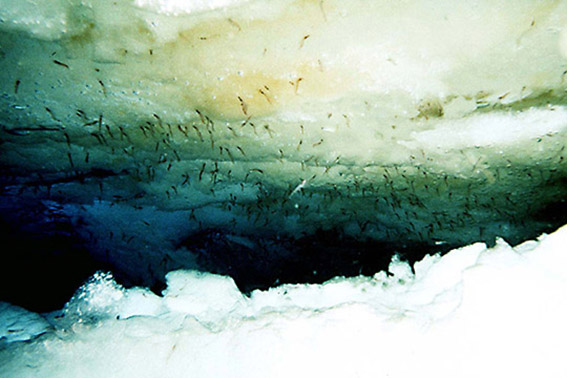
Source Ice Algae | Wikipedia
This is the name given for the different types of algal communities that live in sea ice, mainly on the underside of the ice. It is the base of the entire food web for the Arctic ecosystem. Ice algae is the primary producer in the food web, making organic material from carbon dioxide and water.
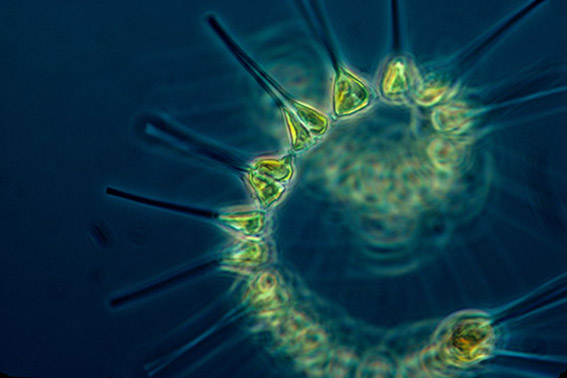
Source Phytoplankton | Wikipedia
Called the “plants of the ocean,” they live on the surface of the ocean and obtain energy from the sun to produce organic matter through photosynthesis. Some of the common groups of phytoplankton are diatoms, coccolithophorids and dinoflagellates. Combined with ice algae, they make up the foundation for all life in the Arctic.
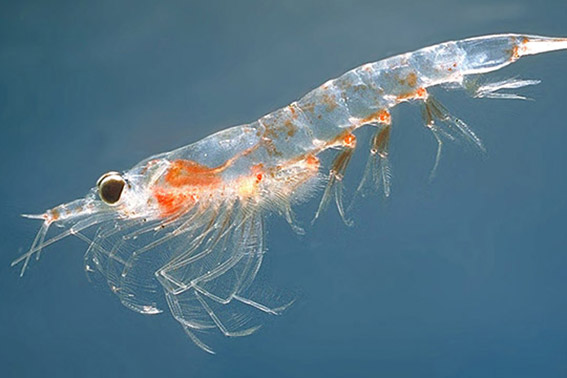
Source Zooplankton | Wikipedia
These organisms range in size from nearly-microscopic to meters long. The most common zooplankton is known as copepods, which are shrimp like creatures that are found in most bodies of water. Along with copepods, krill (another common species of zooplankton) make up a big part of the diet of fish. They eat the phytoplankton and in turn are eaten by bigger animals.

Source Arctic Cod | Wikipedia
There are not many species of Arctic fish. The most important is the Arctic cod, which is found underneath the ice and contains antifreeze compounds in its blood so it is able to survive the cold ocean water. Cod is one of the main food sources for Arctic predators, such as walruses, seals, whales and polar bears.

Source Harbor Seal | Wikipedia
There are 5 different types of seals, though only 4 are typically seen in the Arctic. The bearded and ringed seals are found all year around in the Arctic, while the hooded and harp seals are seen in the area only during the summer months. The bearded seal is the largest Arctic seal, while the smaller ringed seal is the most common. They both feed on shrimp, krill and small fish.
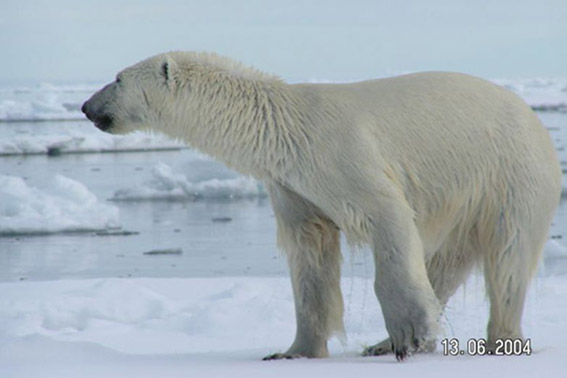
Source Polar Bear | Wikipedia
Besides humans, polar bears are at the top of the Arctic food web. They are perfectly adapted to life on the ice since their fur works not only to camouflage them, but the structure of the fur helps them retain body heat. Polar bears primarily feed on seals, but will eat fish, birds and other scraps whenever food is scarce. During the summer months, they will eat berries and vegetation to survive until the sea ice returns in the winter.

Source Midnight Sun | Wikipedia
The sunlight provides the energy for photosynthesis, which allows the ice algae and phytoplankton to produce. In the fall and winter months, the amount of sunlight in the Arctic decreases, so the rate at which these organisms are able to produce declines. This makes food harder to find, so animals with either hibernate or migrate. Towards the end of winter, the amount of sunlight increases and the algae and phytoplankton are able to start growing.

Source Ice Algae | Wikipedia
This is the name given for the different types of algal communities that live in sea ice, mainly on the underside of the ice. It is the base of the entire food web for the Arctic ecosystem. Ice algae is the primary producer in the food web, making organic material from carbon dioxide and water.

Source Phytoplankton | Wikipedia
Called the “plants of the ocean,” they live on the surface of the ocean and obtain energy from the sun to produce organic matter through photosynthesis. Some of the common groups of phytoplankton are diatoms, coccolithophorids and dinoflagellates. Combined with ice algae, they make up the foundation for all life in the Arctic.

Source Zooplankton | Wikipedia
These organisms range in size from nearly-microscopic to meters long. The most common zooplankton is known as copepods, which are shrimp like creatures that are found in most bodies of water. Along with copepods, krill (another common species of zooplankton) make up a big part of the diet of fish. They eat the phytoplankton and in turn are eaten by bigger animals.

Source Arctic Cod | Wikipedia
There are not many species of Arctic fish. The most important is the Arctic cod, which is found underneath the ice and contains antifreeze compounds in its blood so it is able to survive the cold ocean water. Cod is one of the main food sources for Arctic predators, such as walruses, seals, whales and polar bears.

Source Harbor Seal | Wikipedia
There are 5 different types of seals, though only 4 are typically seen in the Arctic. The bearded and ringed seals are found all year around in the Arctic, while the hooded and harp seals are seen in the area only during the summer months. The bearded seal is the largest Arctic seal, while the smaller ringed seal is the most common. They both feed on shrimp, krill and small fish.

Source Polar Bear | Wikipedia
Besides humans, polar bears are at the top of the Arctic food web. They are perfectly adapted to life on the ice since their fur works not only to camouflage them, but the structure of the fur helps them retain body heat. Polar bears primarily feed on seals, but will eat fish, birds and other scraps whenever food is scarce. During the summer months, they will eat berries and vegetation to survive until the sea ice returns in the winter.
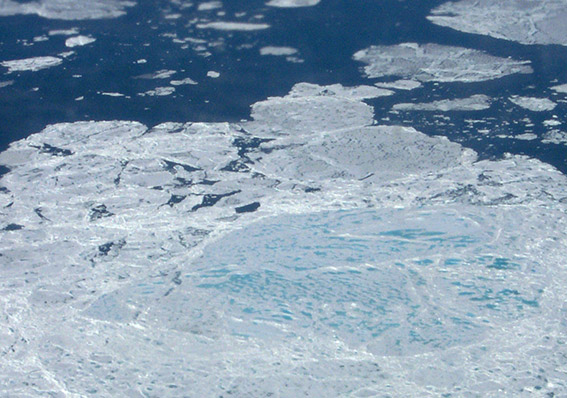
Source Sea Ice Melt Pond | Wikipedia
Less sea ice, means less ice algae, which form the base of this food web. The ice algae convert energy from the sun into food, which is then eaten by the zooplankton. Energy is transferred through the food web all the way to the top consumer, in this case, polar bears. A decrease in sea ice would cause a decrease in each organism in the food web.
Copyright © . WeatherSTEM. All Rights Reserved.
